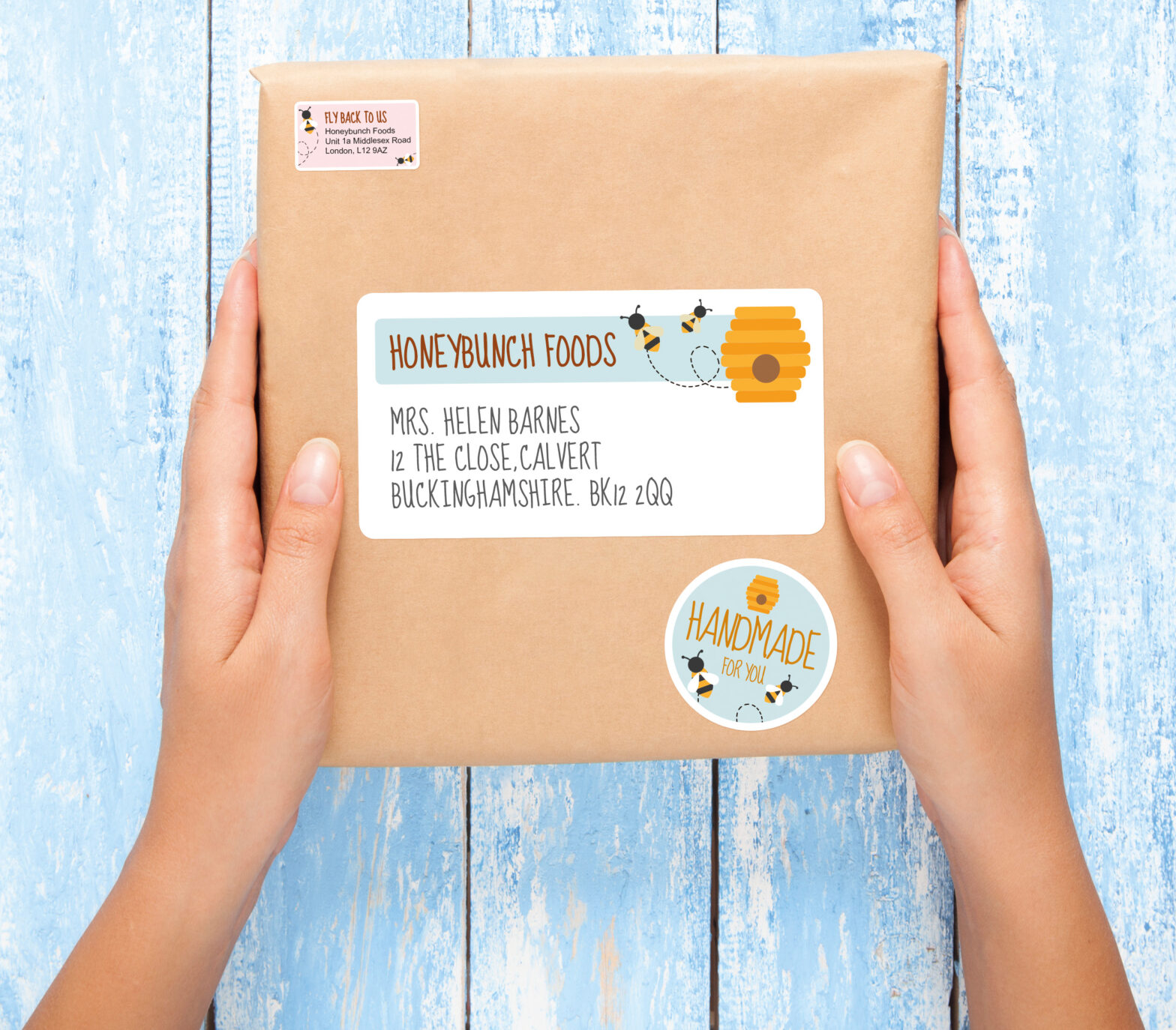New research from Avery UK reveals the the power and influence start-ups can exert through persuasive labels on products and shipping.
Working with an established behavioural psychologist, Avery UK tested consumer response to small business label designs to reveal how certain elements can encourage positive reactions to the items to which they are attached.
Small businesses are missing a trick if they only use one plain address label. It turns out that a package can evoke positive feeling toward a brand just by adding a few extra carefully designed labels.
The study explored important aspects for anyone selling goods either online or face to face. It considered how various label designs affected how much someone was willing to pay; how they made people feel towards a company and how likely test subjects were to make a repeat purchase.
“This has been ground-breaking research for us. We suspected there was more to the science of label design than might first meet the eye, but the discoveries have been extremely enlightening,” said Fiona Mills, marketing director at Avery UK. “We can now speak with the utmost authority to say that labels really do make a difference to the performance of small businesses.”
The research included three scientific approaches to understand what makes a successful label. A literature review of 159 academic papers about previously conducted research helped to identify the gaps in knowledge and shape the rest of the study.
Eye-tracking apparatus was then used in controlled laboratory conditions to trace exactly where a label can lead the eye. All test subjects were no stranger to buying from small businesses.
And finally, three online experiments were conducted testing 1,108 British adults to examine the more cerebral and behavioural aspects of labels. There were two sides to the research: one centred on product labelling and the other featured mailing and shipping labels.
The results have uncovered many insights into how small businesses can make label design work for them but two major principles really stand out. They involve the eye and the brain of the consumer.
Catch the eye
It may sound obvious but if a label can grab customer attention above all the competition then you’ve won half the battle. The Avery UK eye-tracking experiments confirmed that bright colours and large labels help your potential consumer stop and look; while bold lines, borders and stripes mean that your label could be viewed 42 per cent more than plainer labels nearby.
Engage the brain
Now that you have a consumer’s attention, the best way to hold it and convert it into a desired outcome (like a purchase or a positive opinion of your brand) is to make the brain think and engage with the product or package. This can be achieved through emotion, information, priming, heuristics (helpful decision-making shortcuts) and curiosity. Our report delves into the
1. Emotion trumps reason in decision-making. We may not want to admit it but we tend to buy with our hearts and then justify our decision with our heads. Humans are hardwired to notice emotion and the use of an emotive word like ‘love’ or ‘pride’ or adding an emotive image such as a heart or happy face are simple but effective ways to increase consumer engagement, association and ultimate investment. In the study, an emotive image made people spend 13 per cent longer looking at the product and adding an emotive word like ‘enjoy’, encouraged participants to look at a label for 10 per cent longer.
2. There is a sudden spike in brain activity when we encounter something that needs to be ‘worked out’. Adding a label with a special message like ‘Just for you’ or ‘What’s inside?’ to encourage curiosity, can really increase response rates. When we tested a label that evoked curiosity it increased purchase intentions by 43 per cent and the potential for word-of-mouth recommendation by a significant 103 per cent.
3. Multiple labels multiply positive results. A very clear and intriguing finding in the study was that the use of multiple labels when shipping items increased positive emotions in the recipient and led to a higher likelihood of customer loyalty and repeat purchase. In fact, using multiple labels on a shipping package could increase brand love by as much as 129 per cent, perception of quality by 116 per cent, purchase intent by 113 per cent and word of mouth recommendation by 135 per cent.
“While we don’t recommend businesses stick labels on their packages for the sake of it, there is a clear business case for going above and beyond a simple plain address label. An address label, a company brand label, a return address label and a friendly special message label will give enough space to get across the important information, your brand, your professionalism and your heart for your valued customer.”
The special message label, in particular, will help attract attention and can influence future purchase behaviour. Examples of this include adding labels that say things like ‘open me’, ‘see what’s inside’, ‘handmade with love’ or ‘just for you’. Meanwhile, personalising your messages will make your customer feel even more special. When a mailing envelope in our study included the participant’s name, they spent 11 per cent longer looking at it than average and were 10 per cent likelier to look at it first.
“I never realised just how much power lies in a tiny label. The psychology is fascinating. Since reading this report, we’re definitely rethinking our packaging strategy,” small business-owner, Kate Efomi of Notebook Love, said.
“We’ll be adding quality branded labels to the packaging of all our products and our envelopes will definitely have a more personal touch – the address label will be accompanied by special messages of appreciation towards our customers and our branding will be bold, quality and eye-catching,” she added.
“Before, we were just sending plain white envelopes with plain white address labels. Who knew that by making the outside of the package more eye-catching and intriguing, our customers are more likely to warm to us as a company and want to buy from us again?”







